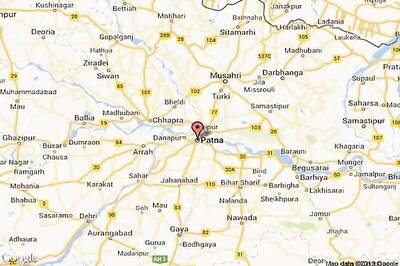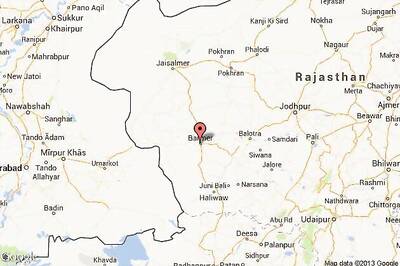
views
With Prime Minister Narendra Modi-led Cabinet decision on August 23 to constitute a Commission to work out the mechanism, criteria, norms and parameters in a scientific approach for Categorization of Socially and Educationally Backward Classes (SEdBCs) in the Central List and assign the castes in that List to appropriate Categories, based on the degree and extent of backwardness, the government has taken a momentous step for the advancement of the SEdBCs.
This is a long-overdue measure, dating back to 1980 at the national level and periodically pressed upon successive Union governments by the National Commission for Backward Classes (NCBC) and other bodies from 1993 and personally by myself through official reports, committees, documents in the public domain like the Dalit Manifesto 1996 authored by me, and personal communications and discussions, but evaded till now. I will come to this history lower down.
Now the most urgent issue is to ensure that categorization is done objectively, as intended in the government’s announcement, without allowing electoral and other extraneous considerations to intrude. The range and degree of backwardness among the SEdBCs is very wide. At one end are castes which are close to the SCs except that they have not been found to be victims of “Untouchability”. At the other end are castes which are close to or just below the Socially Advanced Castes (SACs), i.e., the non-SC, non-ST, non-SEdBC castes (NSCTBCs). In between, there are various gradations. It has been obvious a priori and it has been seen from actual past experience that the More, the Most and the Extremely Backward Castes stand no chance in competition with the relatively advanced Castes of SEdBCs. Therefore, the present initiative, at last, seeks to address the plight of the More, Most and Extremely Backward Castes, by apportioning the total reservation quota into sub-quotas for each of the Categories. In my view, which I have been communicating through different fora and my writings and communications, it would be desirable to have four categories of SEdBCs, viz.,
(a) Extremely Backward Castes
They have no assets, no skills and often no address.Nomadic, Semi-Nomadic and Vimukta Jati communities are of this category. Also in this category are castes which are not included in the list of SCs, only because of Clause (3) of the Presidential Orders from 1951 onwards, such as the Muslim castes traditionally linked with the occupation of manual scavenging like Muslim Mehtar, Muslim Lalbegi (whose Hindu counterparts of the same name are SCs) and Halalkhor (whose Hindu counterparts “Balmiki” and Sikh counterparts “Mazhabi” are SCs)
(b) Most Backward Castes
These are castes without assets but which have skills, though the skills have become outdated. These include artisan castes, artisanal castes, pastoral castes, fishing castes, inferior service-providing castes, etc. Their sudden and unprepared exposure to global competition has deepened their economic distress, damaged their traditional occupations, without opening to new opportunities, and reduced large numbers of them to wage-labourers.
This is the largest category of BCs. While most of this category are castes of Hindu, it also includes most of the Muslim backward castes other than those which are in (a).
(c) More Backward Castes
Tenant Peasants and other Very Weak Peasants like those on Batai tenure in Bihar, Palu tenure in Andhra Pradesh.
(d) Backward Castes
Peasant castes with landed assets
There can be no doubt about the Extremely Backward Castes and the Most Backward Castes. More sensitive analysis will be required to separate land-owning/agricultural communities into Backward and More Backward Castes.
There are also simple and readily available data which can help in confirming the extreme backwardness and most backwardness of the first two categories and to distinguish and differentiate the latter two. Whenever required, I shall be happy to share with the proposed Commission and/or the Government my idea regarding such simple and readily available data.
Objectivity, impartiality and prevention of intrusion of electoral and other considerations in Categorisation and the process of Categorisation are important, not only in fairness to SEdBCs but also to ensure judicial sustainability, for any decision taken is certain to be challenged in the Supreme Court.
The matter does not end there. The proposed Constitutional National Commission for SEdBCs, the Bill for which has been temporarily stalled, should be charged with continuous monitoring of the performance of each Caste within each Category and identify and propose fine-tuning as objectively necessary by measures such as sub-dividing each Category or inter-transfer of castes between Categories on the basis of their performance in securing the benefit of reservation in employment at different levels and in education at different levels.
Some news reports say that this Commission proposed for categorisation is also to look into the possibilities of inclusion of more communities under the Categories. I hope that this is a case of mis-reporting. The proposed Commission will have its hands full with the exercise of categorisation of the castes in the existing Central List. No other task should be entrusted to it. No room should be allowed to create the impression that an effort is proposed to be made to accommodate, through this mechanism, castes which are not socially backward and are agitating, threatening and powerfully mobilising in order to coerce the governments to include them in the list of SEdBCs. Any such attempt is most likely to fail the judicial test and, if combined with the legitimate exercise of Categorisation, may jeopardise that exercise also.
The people of the SEdBCs and those working for them need to be continuously alert and watchful to make sure that categorisation is done objectively, impartially and transparently and without intrusion of electoral and other considerations and castes/communities which are not socially backward are not allowed into the list of SEdBCs. I would also appeal to members of castes which are least backward among the SEdBCs to cooperate with this process with grace. Till now, they have got more than their due share within the quota for SEdBCs in the absence of categorisation and sub-quotas, which ought to have been there from the beginning and as has been existing since long in the Peninsular States. They should not resent parting with a portion of it in favour of their and our brethren of the weaker SEdBCs. Failure to do so will create and widen the rift between them and the More, Most and Extremely Backward Castes of SEdBCs, who form the majority of the SEdBC population. Any active or passive opposition to this process or appearance of such opposition will make their attitude and behaviour seem similar to the attitude and behaviour of misguided and ill-informed sections of upper castes of North India in 1990 when reservation for SEdBCs was introduced by the VP Singh Government. Even after categorisation and sub-quotas, the least backward castes of the SEdBCs will continue to get a fair share of the SEdBC quota, and, in addition, they have the capacity to secure a share of the open non-reserved quota.
Categorisation has a long history dating back to pre-Independence period and early post-Independence period in southern Provinces/Princely States/States. In the Centre, the first move was through a note of dissent by Shri L. R. Naik, ex-MP and member of the Mandal Commission (Report of the Second Backward Classes Commission, 1980, Second Part, Vol. VII). His minute of dissent proposed the bifurcation of Backward Classes into Intermediate Backward Classes and Depressed Backward Classes (DBCs), with a sub-quota of 15% for DBCs out of the total 27% quota for BCs. He had consulted me on a personal basis (I was then Joint Secretary, Ministry of Home Affairs in charge of SC and BC Development) and I helped him in touching up and finalising his draft note of dissent. His list of two categories of BCs may not be the last word in categorisation but it was a meaningful first step. But it was not agreed to by the majority members of the Mandal Commission under the impression that the Supreme Court’s judgment in M. R. Balaji and others vs State of Mysore (1963 AIR 649, 1962 SCR Supl. (1) 439) prohibited categorisation of SEdBCs. The Supreme Court in its Mandal judgment (Indra Sawhney and Others vs Union of India and Others, 1992 Supp (3) SCC) clarified that categorisation of SEdBCs on the basis of relative degrees of backwardness is Constitutionally permissible.
The Expert Committee on Backward Classes, of which I was virtually the guiding Member, which was formed in February 1993 for recommending criteria for identifying the Socially Advanced Persons/Section (commonly referred to as the “Creamy Layer”), as directed by the Supreme Court in the Mandal judgment as a pre-condition for commencing reservation for SEdBCs, was, after completing this task, entrusted the task of recommending the basis of categorisation in view of the Supreme Court’s observations. While the Expert Committee was mid-way through this process, this task was withdrawn by the Government, apparently on account of pressure from the less backward castes of the SEdBCs. Thereafter, on various occasions, the NCBC and other bodies and I, as part of the NCBC and also in my personal capacity, have been, from time to time, urging Governments of the last quarter of a century to initiate categorisation. The first positive decision of the government on this has come now, rightly though belated – Der Aayaa, Durust Aaya.
It is a matter for appreciation that the government has fixed a three-month time-limit for the Commission’s work. This time schedule should be strictly adhered to. It is practicable. For example, the Expert Committee on Backward Classes 1993 gave its first report within the stipulated 15 days and the next report within the dateline of 30 June 1993, which enabled actual commencement of Reservation for SEdBCs in Central jobs in 1993 itself.
The newspaper reports and reactions contain certain errors and misconceptions which need to be removed, which I shall deal with in the Part-II on News18.com
(The author is former Secretary to Government of India and former Member-Secretary, National Commission for Backward Classes and has been in the field of Social Justice for SCs, STs and SEdBCs for nearly seven decades. A 1956 batch IAS officer, he headed the Welfare Ministry in 1990 when Prime Minister VP Singh had implemented 27 per cent reservation in government jobs for OBCs)
Part I of a two-part series


















Comments
0 comment